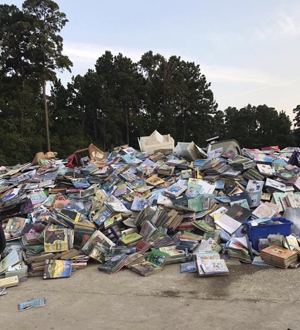 This week, many Houston-area teachers will finally return to school after delays caused by Hurricane Harvey, a disaster that—beyond broken windows, power outages, and destroyed classroom supplies—could impact students’ emotional and academic well-being for years to come.
This week, many Houston-area teachers will finally return to school after delays caused by Hurricane Harvey, a disaster that—beyond broken windows, power outages, and destroyed classroom supplies—could impact students’ emotional and academic well-being for years to come.
More than just places to learn, studies show that schools and teachers help children cope with disasters by providing stability, support, and routine as well as a space to process their trauma.
To prepare for the long, arduous road to normalcy ahead, we’ve compiled a list of learning tools and resources to help educators respond to the storm and its aftermath with students.
Lessons and activities
Helping Children After Natural Disasters: Colorín Colorado's compilation of multilingual tips and resources prepare school personnel to offer support following a natural disaster. Topics include "helping students cope," "providing staff support," "working with parents," "building community," and more.
NASA’s Hurricane Educational Links: NASA-developed educational tools including posters, visualizations and graphics, lesson plans, and classroom activities on hurricanes.
Education World’s Hurricane Watch: Lessons and classroom activities to help students understand hurricanes and their consequences.
Hurricane Season, Grades 6-8: The National Education Association’s recommended resources including lesson plans, classroom activities, printables, animations, and videos.
Lesson Plans for Teachers: Compiled by the Teachers Pay Teachers group, this site includes free and inexpensive lesson plans, videos, writing prompts, and more.
Helping After Harvey: Ideas for hosting school-wide volunteer initiatives such as fundraisers, social media campaigns, blood drives, and more. This site also includes a list of inclusive disaster strategies.
Media literacy tools
“How Media Literacy Helps You Talk About Hurricane Harvey With Your Students”: PBS lesson to help educators discuss the effects of extreme weather events and helpful media literacy tools when it comes to media coverage of the hurricane.
Harvey in Pictures: A collection of powerful photographs depicting the hurricane and its aftermath.
"Teaching Hurricane Harvey: Ideas and Resources:” The New York Times guide explains how teachers can round up storm-related news and images from social media for students to analyze and provides discussion questions.
Books
Hurricane Harvey Book Club: Started by a second-grade teacher, this Facebook group (which now has more than 50,000 members) is a “literary oasis” where people can share videos of themselves reading aloud with those who have no books available.
“8 Books to Help Children Understand Natural Disasters and Cope With Anxiety”: Published by Forbes, this list offers books recommendations for helping children understand the disaster and cope with the feelings they may have now and later on.
Alina O’Donnell is the editor of Literacy Daily.